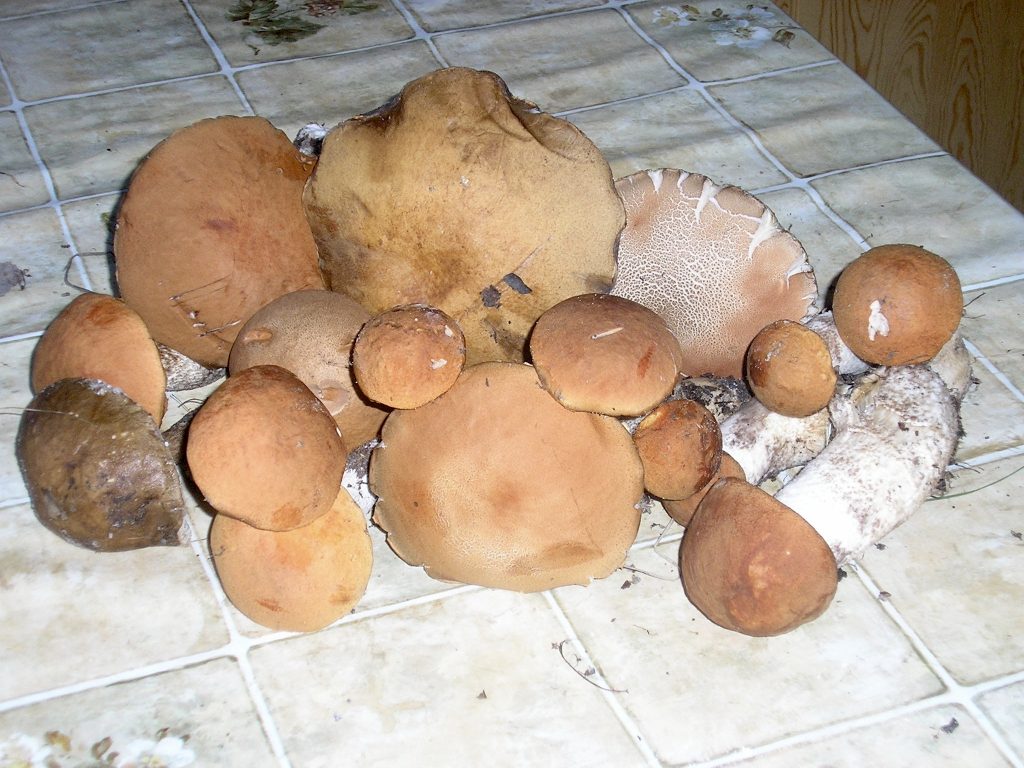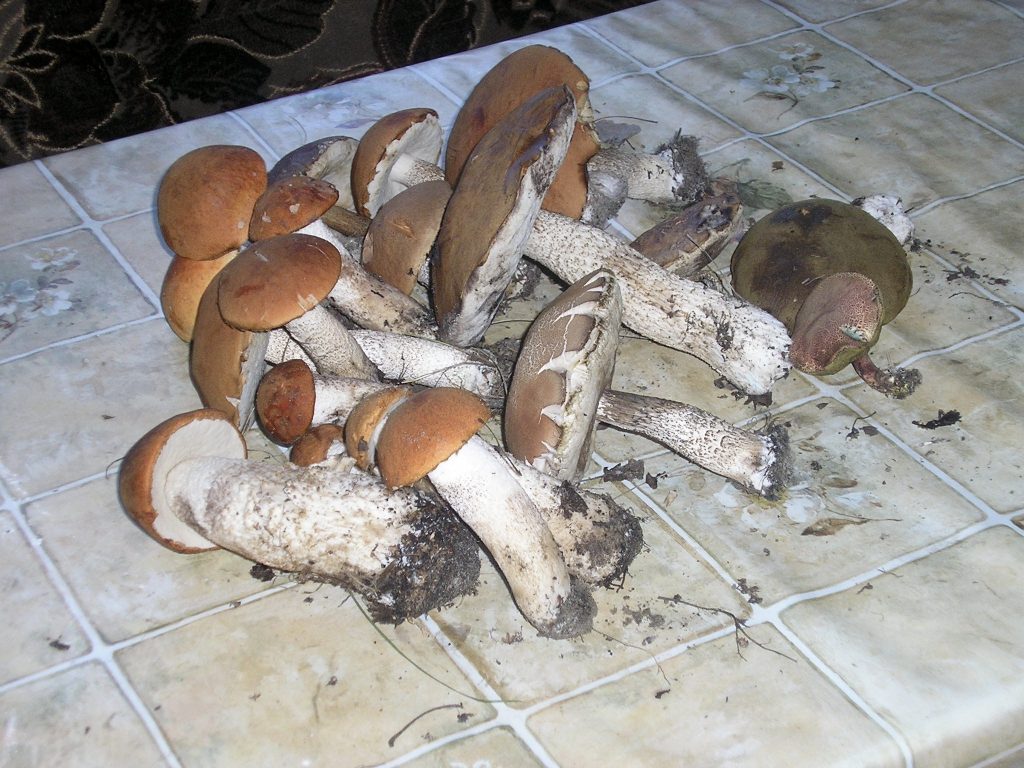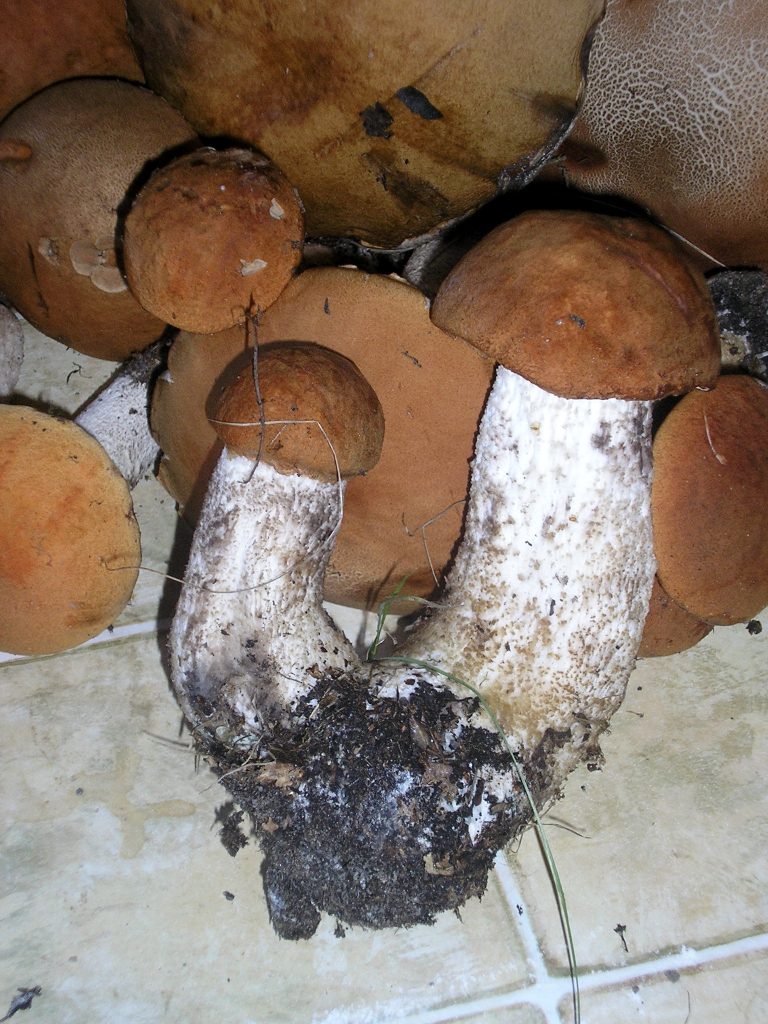Mushroom picking in Poland Posted by Kasia on Aug 11, 2011 in Culture, Nature
Mushroom hunting or mushrooming (chodzenie na grzyby, grzybobranie) is the activity of searching for mushrooms in the wild, typically for eating. It is popular in most of Europe, from the Nordic, Baltic and Slavic countries to the Mediterranean Basin. To some it is a sport – one in which the mushrooms may actually have a chance of “winning” different games. For example, we as kids would always set up a time of, let’s say 2 hours, and compete who will pick the most mushrooms during that time.
Picking mushrooms and eating them is a safe occupation, provided one recognises the toxic types (trujące rodzaje), properly identifies the species (gatunki), and stays with the most common edible (jadalne) ones. There is a large number of mushrooms species that are favoured for eating by mushroom hunters. The king bolete (król babka) is a popular delicacy. Sulphur shelf (siarki) is often gathered because it occurs in bulk, recurs year after year, is easily identified, and has a wide variety of culinary uses. Chanterelles (kurki) and morels (smardze) are among the most popular types of mushrooms to gather, the latter being fairly hard to misidentify by anyone with practice. Only experts, however, collect from dangerous groups, such as Amanita (muchomor), which include some of the most toxic mushrooms in existence. Identification is not the only element of mushroom hunting that takes practice – knowing where to search does as well. Most mushroom species require very specific conditions some will only grow at the base of a certain type of tree, for example. Finding a desired species that is known to grow in a certain region can be a challenge.
Have you gone mushroom picking in Poland? Polish people even organize mushroom picking tours for visitors:)
Do następnego razu… (Till next time…)

Build vocabulary, practice pronunciation, and more with Transparent Language Online. Available anytime, anywhere, on any device.
About the Author: Kasia
My name is Kasia Scontsas. I grew near Lublin, Poland and moved to Warsaw to study International Business. I have passion for languages: any languages! Currently I live in New Hampshire. I enjoy skiing, kayaking, biking and paddle boarding. My husband speaks a little Polish, but our daughters are fluent in it! I wanted to make sure that they can communicate with their Polish relatives in our native language. Teaching them Polish since they were born was the best thing I could have given them! I have been writing about learning Polish language and culture for Transparent Language’s Polish Blog since 2010.







Comments:
marysia:
Morels, my Polish mother does not remember them and you did not mention them. Do they grow over three in the spring?
lex wadelski:
Your food blogs have been wonderful…so
evocative.
Can’t wait for the heat/drought here in Texas to subside…to make the beet soup/borscht recipe.
As for mushroom hunting…perhaps one day I will pick grzybys…in Poland.